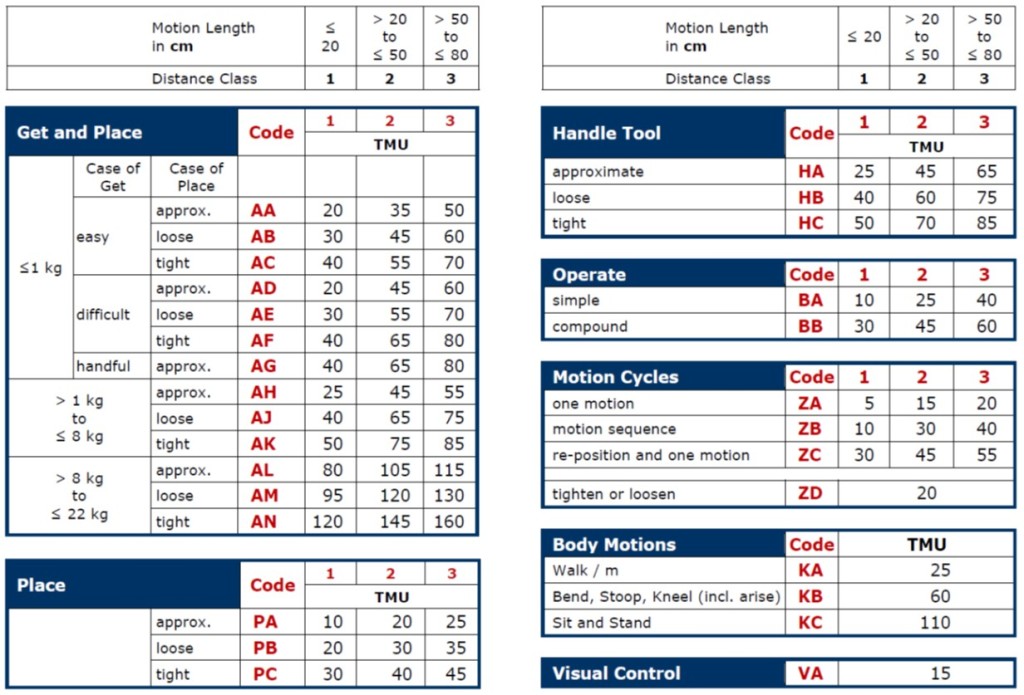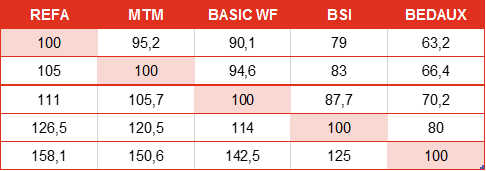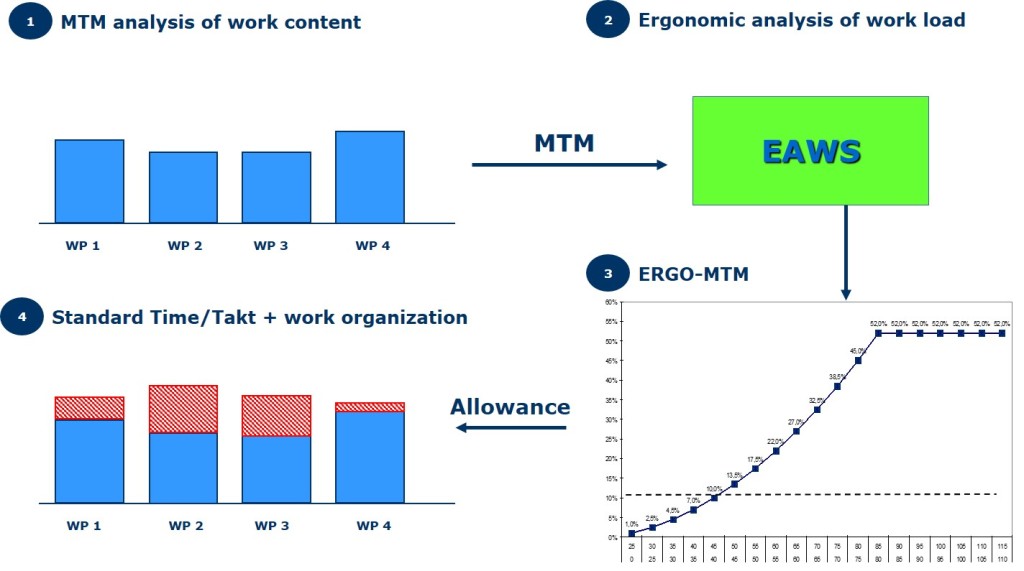Why do we need to standardize work organization?
What do I mean by work organization? First let’s clarify immediately that I am referring to the work in the factories, the one normally done on assembly lines or in the production departments. The industry has always been living the dilemma of exploitation of workers against the need to produce profits. Karl Marx believed that – in a society where everyone is free and equal, and in which every commodity, including labor power, is sold at its value – there exists the exploitation of workers. In the first book of Capital it is treated the problem of the goods, which has two aspects: it has a use value in that it is useful for something (to the satisfaction of a need through the consumption or to produce other goods) and it has a value of exchange because it has to be exchanged for other goods. According to his theory of value, a product (from the equation value = work, recovered by the classical economy and reworked) has the more valuable the more working time is spent by the company to produce it.
As you see, the problem of the work measurement has been and is still one of the main topics of discussion in the economy and in every single productive activity in which an employment relationship is functional to the production of a product / service (value). Why when we go to the market to buy fruit the fruit seller accurately weights the quantity purchased before determining the price, while we accept that the work is measured by approximate methods? In this precision requirement, we must now add another question no less critical: the preservation of workers’ health. And nowadays it is a fact and it’saccepted that prolonged exposure to biomechanical load levels is causing risks of occupational diseases, ranging from herniated discs to various inflammatory diseases of the tendons and joints.
That said – I apologize if I have dwelt but it was necessary to highlight the importance of the theme – pushes us to think: how do we measure work today? And how do we arrange for this to be productive and at the same time, does not generate risks for the worker? Without a normed metric it is the Far West: in “unions less” companies we will have the exploitation of the worker causing severe risks to his/her health; in hyper-unionized companies the work rates are not competitive with high risk un-competitiveness. Or, more simply, we will have rough estimates perhaps useful for production planning based on historical values, which, of course, are the result of habits and layers of ancestral agreements of the past. Obviously there are exceptions to everything I’m writing, but these are very minor small percentages on the national average.
The point is to understand the absolute importance of having an accurate work measurement, analytical and transparent, since the standard times are one of the fundamental pillars on which to build a factory. First let’s start by pointing out a fundamental concept: the standard time is not the actual time it takes to perform a task, or the average of the times, nor the minimum time or another. The standard time to perform a task is “the time taken by a well-trained operator, with normal physical characteristics, working with a nearly constant rate for the duration of the shift without significant fatigue.” The implicit concept in this definition is that of normal performance. But what does it affect the work performance? There are three factors of influence under the control of the operator: the speed of execution, the effort and the precision of movements. Working at normal performance means “dancing” or moving without tearing, accurately and without hesitation and most importantly, without hurrying up. Our work measurement system is “a medium task system” because it sets standard times on the basis of a medium-low performance level. For reference, I tell you that from a study carried out in 1995 by the Swedish MTM, it emerged that the average performance detected among housewives who prepared the dinner was a result from 20% to 30% higher than the normal reference.
What do we have today in terms of work measurement and rules available? Sifting through the documents published by the international organizations (ISO, CEN and ILO in particular) there are many conventions regarding the standards about weekly or daily work, night work, weekly rest. However, nothing that relates to the concept of normal performance of work. In my long career as industrial engineer and coordinating since 2002 the international MTM network (www.mtm-international.org), I was able to retrieve a lot of information from the field.
There are today different scales on which the work performanceis measured. Among the most known we have the BSI scale (British Standards Institute), the Bedaux scale and REFA scale, in addition to our MTM scale (Metgods-Time Measurement). What is for me a real paradox is that all these scales pose their own reference on the concept of normal pergormance and yet that level turns out to be very different from scale to scale.
Amazing to note how the normal reference level is so different from scale to scale, notwithstanding the definition looks similar! As if the workers could be so different from Country to Country and from industry to industry. Be aware, despite that, still today we refer (at best!) to such scales to define the level of standard performance or the calculation system of productivity bonuses. Attend a company-union discussion on the definition of a specialist employment contract (the one where you agree on the metric of the work, the saturation levels, breaks, etc.) It is often an exercise in understanding, given that the parties use glibly concepts without knowing essentially the real meanings. Usually the goals are to “gain advantage on the counterpart”, forgetting that behind all this there are human beings and companies who have to work together to survive. Based on my long experience on the topic I can safely say the following: the definition of normal work performance is “wet tobacco”, it is useless. All the systems in place up to now consider individual movements or portions of work steps defined as phases. In taking and placing an object, as a function of some influence factors such as the weight and distance, the different metrics propose a basic time, that is, a time normalized on the basis of the normal performance definition. The problem is that this value refers to a single movement, instead of the foregoing and what follows. If we deal a deck of 40 cards to the players around the table, knowing that getting and placing a card requires 1.5 seconds, that would lead us to conclude that the entire deck would be distributed in a minute. But what happens before and after that minute? If the next task is dealing a further deck and resume distributing the 40 cards and so on until the end of the shift and back again the same way in the days ahead, would you you think that worker could get to retirement without any problems? This simple observation should make clear that the normal performance definition is somewhere wrong. This concept must be overcome and a lot of content to date considered sacred and unchangeable by the parties (all!) are to be revised in light of the most recent discoveries in the field of occupational medicine and ergonomics.
Well, our Foundation has finally overcome the obstacle by leading a research project that lasted about 10 years (2000-2010) and it still sees the validation activities underway: the ERGO-MTM project. MTM is a system of measurement of the work at predetermined times: to define the basic time (standard performance) it does not use any stopwatch and the rated labor productivity; you need to break down the work task in elementary movements, which are tabulated in MTM systems and known as basic times, so to aggregate the time to calculate the overall basic time of the given task. By way of example, find here below the table of the MTM-UAS system, one of the most used MTM system in the World.

Once calculated the basic time base of all tasks assigned to a given workstation, with ERGO-MTM approach we are now able to determine the biomechanical load (fatigue) generated by the activities assigned to that location. This is possible thanks to very important development of the MTM network: the Ergonomic Assessment Work Sheet system EAWS ©. EAWS basically checks if the level of fatigue of the worker remains under the limits defined by the ISO standard 11228 (manual material handling, forces and repetitive movements of the upper limbs) and 11226 (general body postures). If the effort remains low in the first band (green color), we can accept the MTM basic time as definitive. If not, the model ERGO-MTM would lower the bar of required performance, effectively lengthening the assigned time. The effect of this would be a slowing down of the work system, that would result in lower saturation levels or additional breaks. The human body is like a car engine: if it overheats you must take a break or slow down the rush to lower the temperature and to avoid irreparable damage.
The ERGO-MTM system was launched a few years ago (the first real pilot has been the establishment of the FCA Pomigliano plant with the production of the new Panda and the agreement of 2010, which included the ERGO-UAS system in the labour organization contract) and underwent impressive acceleration in its diffusion in Italy and abroad. So why the title of this article talks about the need to standardize the organization of work? The reason is both simple and absurd. Simple, since in this way we speed up the diffusion process; aberrant, because the opponents hide themselves behind the fact that ERGO-MTM is using systems that are not recognized by the international ergonomic community , omitting that EAWS is today used worldwide by multinational corporations such as Bosch, Bosch-Siemens, Denso, VW (we count approximately 670,000 workers mapped EAWS in the world!) and which also the ISO TR 12295 has officially considered EAWS as one of the latest and most innovative developments. However, the resistance shown so far have certainly slowed the process of learning new ergonomic techniques (EAWS) by the supervisory bodies (RLS and Prevention and Safety in the Workplace – PSAL), effectively creating a disconnect between business practices and regulatory / legislative requirements. Who benefits from all this? Certainly not to the workers, nor the companies. The detachment of the reasons are natural: when the legal obligations are perceived as unnecessary and expensive and create a competitive disadvantage against the member countries of the European community, these are exceeded by more advanced systems. Companies do not want to shirk the obligations of substance to ensure the health of workers; they want to meet the obligations imposed by Legislative Decree no. 81/2008 in the best way with costs not exceeding those of the competition. How is it possible? Simple: with the preventive ergonomics, integrating risk assessment into the product/process development , when it is still possible and economical to modify the product and the process without incurring unsustainable costs. When the metal has been cut (molds, equipment, product certification, etc.) you will never go back and, in the case of ergonomic problems, we will have to live with them until the end of the life cycle of the product.
Since 2012 I am coordinating the Working Group Anthropometry and Biomechanics and I am one of the Italian experts who work in the CEN / ISO mirror group of Biomechanics and in these days I am preparing the formal documentation to launch a New Working Item Proposal (NWIP) through the body of the Italian standardization organization (UNI) for the definition of a new CEN / ISO standard . My proposal aims to standardize labour performance level as defined in the ERGO-MTM model, linking it with the intensity of the effort paid by the worker. The result would be a model in which postures, forces, handling, action frequency and work organization (breaks, type of production system and shift duration) are connected in an integrated system and they can be balanced; if we increase the work saturation or shrink the breaks, it may happen that the ergonomic allowance increase (the factor that reduces the level of required performance) increases to such an extent as to reset and overcome the adverse effect of increased work intensity. Another great advantage is also the connection between the risk assessment and the definition of the work cycle, crucial information in the company to plan production and calculate the costs and therefore, usually, always kept updated. In this way we would finally have an up to date ergonomic risk map requiring no extra costs to meet the requirements of the Decree. 81/2008. The systematic use of Ergo-MTM would exceed the levelof accuracy and depth of the legislative requirements.
It ‘s time to implement the results of the most recent discoveries in the field of ergonomics and occupational medicine, making the effort to engineer the measuring systems in order to minimize the deviation of the applicator. There is nothing worse in the business, as well as in the application of relevant norms such as those that deal with the safety of workers, of having vague and subjective regulations in their application, as reported in the actual ergonomic risk assessment procedures.
It ‘s time to turn the page and start working together constructively and responsibly.






